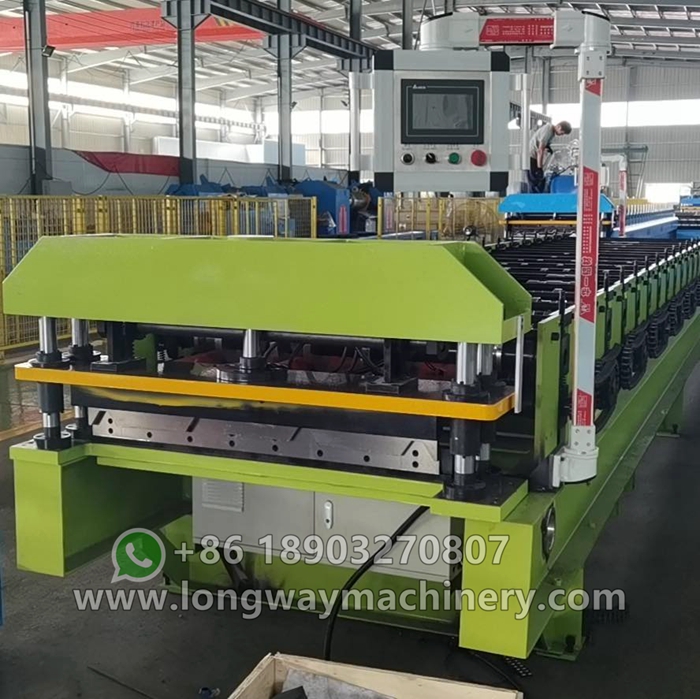Roll Forming Machine for High-Quality Shutter Production and Customization Solutions
Understanding Shutter Roll Forming Machines A Comprehensive Overview
In the realm of modern manufacturing, efficiency and precision are paramount, especially in the production of building materials and structural components. One of the innovative technologies that has gained prominence in this regard is the shutter roll forming machine. This machine plays a crucial role in the manufacturing of metal rolling shutters and similar products, which are widely used in commercial and residential properties for security and aesthetic purposes.
What is a Shutter Roll Forming Machine?
A shutter roll forming machine is an advanced piece of equipment specifically designed to create various types of metal profiles, notably for rolling shutters. The process involves feeding a flat metal strip, usually made of steel or aluminum, into a series of rollers that progressively shape the material into the desired profile. This method is known for its ability to produce high-strength components consistently and efficiently.
The Manufacturing Process
The roll forming process for shutters begins with the selection of the appropriate raw material, which is typically galvanized steel or aluminum. The metal strip is then inserted into a series of rollers that are arranged in a particular sequence. As the material passes through these rollers, it is shaped into the profile of the shutter design.
The process can be customized by changing the roller setups to produce various designs, including curved or straight profiles. Once the desired shape is achieved, additional operations such as cutting, punching, and welding can be performed to complete the finished product. This flexibility allows manufacturers to tailor their output to meet specific customer requirements.
Advantages of Using Shutter Roll Forming Machines
1. High Efficiency One of the most significant advantages of shutter roll forming machines is their ability to produce large quantities of products in a relatively short period. The continuous nature of the process ensures that production lines can operate at high speeds, significantly reducing manufacturing time.
shutter roll forming machine

2. Precision and Consistency These machines are designed to provide a high level of precision in the formation of metal profiles. This consistency is crucial for ensuring that the shutters fit perfectly into their designated spaces, enhancing both aesthetics and security.
3. Cost-Effectiveness By maximizing material usage and minimizing waste, shutter roll forming machines contribute to the overall cost-effectiveness of the manufacturing process. Their durability and low maintenance also help reduce operational costs over time.
4. Versatility Beyond rolling shutters, these machines can be adapted to produce a variety of other metal products, including awnings, garage doors, and even architectural panels. This versatility makes them an attractive option for manufacturers looking to expand their product offerings.
5. Automation Modern shutter roll forming machines often come equipped with automation features, including programmable controllers and sensors. This technology enhances the ability to monitor production, adjust settings in real time, and maintain high levels of quality control.
Applications and Market Demand
The demand for rolling shutters has been on the rise due to increasing concerns about security and the need for efficient, flexible access solutions in both residential and commercial settings. Industries such as retail, hospitality, and logistics rely heavily on roll-up shutters for security and space management, driving the need for reliable manufacturing solutions like shutter roll forming machines.
Additionally, the growing trend toward custom designs and specifications in architectural projects encourages manufacturers to invest in advanced roll forming technology that can accommodate such demands.
Conclusion
Shutter roll forming machines represent a significant advancement in the manufacturing of metal components, combining efficiency, precision, and versatility. As the market for rolling shutters and related products continues to expand, the role of these machines in meeting consumer demands will only become more critical. For manufacturers, investing in high-quality shutter roll forming technology means not only improving production efficiency but also enhancing their ability to deliver tailored solutions in an ever-competitive landscape. As the construction and security industries evolve, these machines will undoubtedly play a pivotal role in shaping the future of architectural safety and design.
-
Roof Panel Machines: Buying Guide, Types, and PricingNewsJul.04, 2025
-
Purlin Machines: Types, Features, and Pricing GuideNewsJul.04, 2025
-
Metal Embossing Machines: Types, Applications, and Buying GuideNewsJul.04, 2025
-
Gutter Machines: Features, Types, and Cost BreakdownNewsJul.04, 2025
-
Cut to Length Line: Overview, Equipment, and Buying GuideNewsJul.04, 2025
-
Auto Stacker: Features, Applications, and Cost BreakdownNewsJul.04, 2025
-
Top Drywall Profile Machine Models for SaleNewsJun.05, 2025








